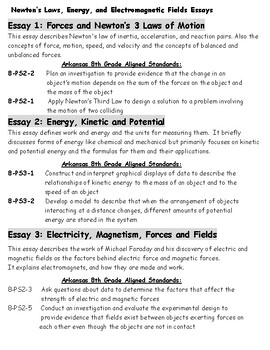8th Grade ATLAS - Newton Laws, Energy, and Fields
- PDF
Also included in
- This file is a "boot camp" like collection of essays, vocabulary, and study cards designed to help students quickly understand, comprehend, and remember important standards and material related to questions found on the ATLAS exam.I am a 16 year veteran teacher who has experienced great success in hPrice $88.00Original Price $110.00Save $22.00
Description
This file is a "boot camp" like collection of essays, vocabulary, and study cards designed to help students quickly understand, comprehend, and remember important standards and material related to questions found on the ATLAS exam.
I am a 16 year veteran teacher who has experienced great success in helping my students successfully excel on Arkansas end of year standardized testing. This is a great tool for novice and first year teachers who need work to help their students learn content in an easy and quick way. These lessons can take anywhere between 6-10 forty-five minute blocks. I am certain it will be worth the cost.
This guide includes:
- 3 essays detailing Newton's 3 laws of motion, kinetic energy, potential energy, electricity, magnetism, force, and electromagnetic fields
- Vocabulary sets for all of the major terms within each essay to ensure student comprehension
- Flash cards for each vocabulary set for guided or self-directed learning






